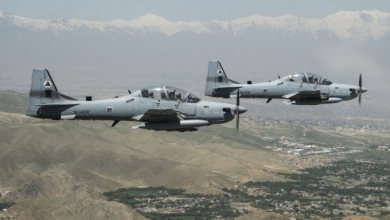Air Force Considers Commercial Aircraft for Light Attack Fleet

By Debbie Gregory.
The U.S. Air Force has taken the initial steps to buy commercial, off-the-shelf aircraft for its light attack aircraft fleet by issuing a pre-announcement of solicitation bids in December 2018.
The awardee will be chosen in the fourth quarter of the 2019 Fiscal Year, which runs from July 1, 2019, to Sept. 30, 2019. The Air Force still has yet to say how many aircraft it expects to purchase
While the program would remain a full and open competition, Air Force officials said the most viable aircraft are the Textron Aviation AT-6 Wolverine and Sierra Nevada/Embraer A-29 Super Tucano.
“LAA will provide an affordable, non-developmental aircraft intended to operate globally in the types of Irregular Warfare environments that have characterized combat operations over the past 25 years,” the notice explained. “Sierra Nevada Corporation (SNC) and Textron Aviation are the only firms that appear to possess the capability necessary to meet the requirement within the Air Force’s time frame without causing an unacceptable delay in meeting the needs of the warfighter.”
The Air Force and other branches of the U.S. military have evaluated these aircraft on no less than six separate occasions since 2007. The two single-engine turboprop aircraft were most recently part of the service’s light attack experiment at Holloman Air Force Base, New Mexico.
A fatal accident in June 2018 shut down the tests early, with the Air Force declaring it had all the data it needed. Navy Lt. Christopher Carey Short, of Canandaigua, New York, was piloting an A-29 when it crashed over the Red Rio Bombing Range in New Mexico.
Congress has added hundreds of millions into the defense budget in support of light attack aircraft projects, but the Air Force has suggested that a full light attack aircraft program that sees the purchase of between 200 and 300 aircraft in total could cost approximately $2.5 billion between the 2020 and 2024 fiscal years.
It should be noted that these aircraft are not a substitute for high-performance combat jets, but rather a complimentary capability with a smaller logistics footprint that helps reduce the operational and sustainment demands on those other fleets and their pilots.







